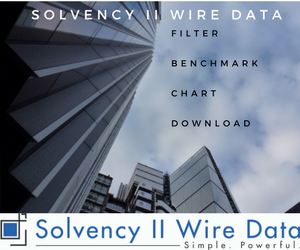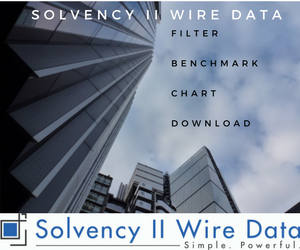 The ORSA must be part of the business. Clare Bousfield, Chief Financial Officer, Aegon UK, describes how to derive value from the ORSA by shifting ownership from the risk function to the primary risk takers and using the ORSA report as an educational tool.
The ORSA must be part of the business. Clare Bousfield, Chief Financial Officer, Aegon UK, describes how to derive value from the ORSA by shifting ownership from the risk function to the primary risk takers and using the ORSA report as an educational tool.
—
As a CFO I’m responsible for creating a sustainable business model for the company and ensuring there is sufficient capital to manage the business. An essential part of that objective is making sure capital is being used effectively.
In respect of regulation it means making the most of regulatory requirements. If you treat regulation as a pure compliance exercise you just load overheads onto the business and don’t get value from it.
The question I am always asking is: what is the regulation trying to get you to focus on? The challenge is to then make the process you go through valuable for your business.
The ORSA is the way in which we manage our business. It’s a real time process that drives the business performance and management of risk. With the ORSA we found that by establishing accountability and ownership of the process with the primary risk takers we are able to extract value for the business and allocate capital as accurately and efficiently as possible to the right business lines in order to drive accurate business decisions based on the right measurement of risk.
Driven by business and strategy
At Aegon we did our first ORSA towards the end of 2012. We were naturally drawn to thinking that this was primarily about risk and that it should be owned and managed by the risk department. The initial ORSA report was quite static, like a reference document in terms of setting out our risk strategy and risk framework, and how we manage our business.
I remember going through it and thinking this doesn’t really work for me in terms of being something that you could actually use to manage the business as well as manage risk and capital. So when we set out to do our second ORSA six months ago I wanted to ensure that it was driven by the business and the strategy. It became clear that the ownership of the process and the document should be with those who held responsibility for managing the risk and driving the capital.
This was the first in a number of steps we took in order to make both the ORSA and the ORSA report more relevant to running the business.
The way we approach the work is that the risk function has to be comfortable with how we manage the risk and what we say we are doing. The team gives a lot of input into the process but the ownership is with the primary risk takers.
The business drives the business plan on an annual basis. We intend to integrate the ORSA and the business plan, including all of the sensitivity and stress tests so that effectively we have one holistic view of the business over the next three years.
Another crucial step we took to make the ORSA more practical and useful for the business was to move away from process and into content – real numbers rather than principles. As a result of shifting to real numbers the document became a lot less about definitions and education and more about how we manage the business now and what actions we will take to improve things as they change over time.
The ORSA report as an education tool
In line with our view of deriving value from the regulation we have turned the ORSA report into an important education tool, helping to integrate, educate and engage the business.
For me and the strategy team, a lot of the process of drafting the report was documenting what was in our heads in terms of strategy, and linking it into the way we manage risk. But the broader population across the business wouldn’t necessarily have, for example, a good understanding of some of the more technical and complex risks we manage.
By documenting and discussing the ORSA process, whether it is with the executive team, the Board or the senior leadership team, it enables that broader population to really understand how the strategy works, how it links to the risks that we are writing and the capital we are hold against that.
We found that an in-depth review and discussion of the document helped with some of the Board members, particularly the newer ones, in terms of raising their knowledge levels. But what was more valuable was their ability to then challenge some aspects of the business.
A similar session was held with the senior leadership team (about the top 45 people in the organisation) across all the different functions, which continued to see an increased level of engagement and understanding.
While our pension business is relatively straightforward we also have a reasonably sizable annuity book and a with-profits fund. Those are much more complex in terms of risk and capital. We found that the sessions were quite important to help that group understand at a high level some of the other risks we are running across the other books of business.
The feedback so far has been positive, both from the Board and senior management. You do get a few questions, and people generally value the opportunity to be given the chance to understand some of the other areas of the business.
Future ORSAs
Ultimately I would like to see the ORSA and the ORSA document develop into something that is much broader than the current regulatory requirement. It would integrate all the medium term plan data of our projections of the business on an economical capital basis, together with the Solvency II numbers. Ideally it would also include all the stress and scenario sensitivity analysis so it becomes a more holistic process and document, describing our strategy and identify implications from a risk and capital perspective.
—
The views expressed are the author’s own. Clare Bousfield is Chief Financial Officer of Aegon UK.
To subscribe to the Solvency II Wire mailing list for free click here.]]>








